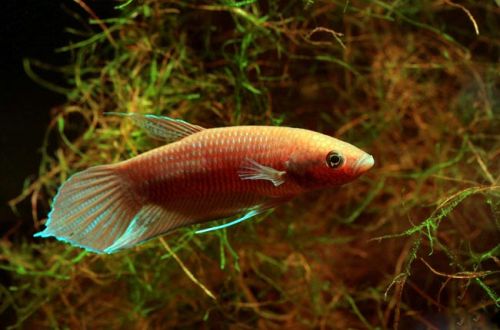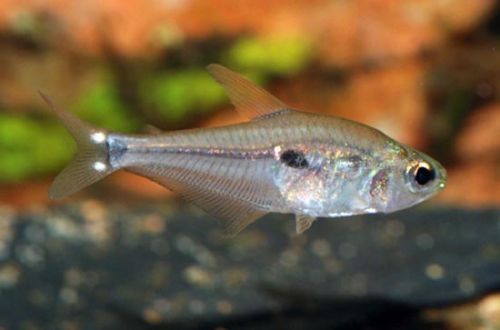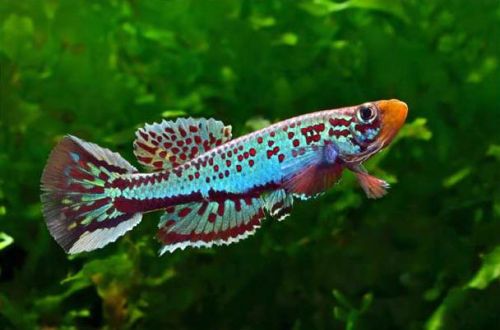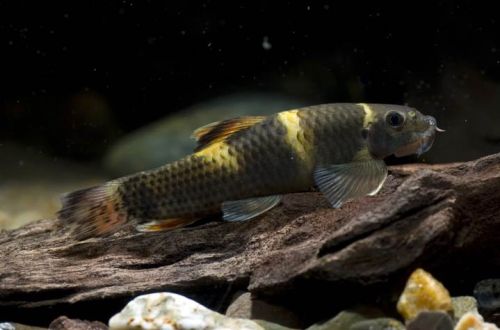
Betta Acar
Betta Acar or Cockerel Acar, scientific name Betta akarensis, belongs to the Osphronemidae family. It is named after the area where it was discovered – the Akar River. Demanding on the composition and quality of water, it has a difficult temper, therefore it is not recommended for beginner aquarists.

Contents
Habitat
It comes from Southeast Asia from the Indonesian part of the island of Borneo, the eastern state of Sarawak. Inhabits the Akar River basin, occurs mainly in swampy areas of rivers, less often in clear flowing water. Typical habitats are a dimly lit reservoir located in the middle of a tropical forest, the bottom of which is covered with a layer of fallen plant material (leaves, branches, etc.). As a result of the decomposition of plant organic matter, the water acquires a rich brown hue due to the high concentration of humic acids and other chemicals.
Brief information:
- The volume of the aquarium – from 70 liters.
- Temperature – 21-27°C
- Value pH — 5.0–7.5
- Water hardness – 1–15 dGH
- Substrate type – any
- Lighting – subdued
- Brackish water – no
- Water movement – weak or absent
- The size of the fish is 7–8 cm.
- Food – any food
- Temperament – peaceful
- Content – in a small aquarium singly or in a pair of male / female
Description
Adult individuals reach a length of 7–8 cm. Sex differences are significant. Males are larger, fins and tail have elongated tips with turquoise edging. Body color is dark red. Females are smaller, fins are short translucent. The body is silvery with rows of horizontal black stripes running from head to tail.
Food
In nature, they feed on insects and other invertebrates. On occasion, they can eat very small fish, fry. In an artificial environment, they are accustomed to alternative products. The basis of the diet will be popular dry food in the form of flakes, granules, with the regular inclusion of live or frozen brine shrimp, daphnia, bloodworms, etc. in the diet.
Maintenance and care, arrangement of the aquarium
The optimal sizes for one or two fish start at 70 liters. In the design, it is desirable to recreate the environment in which fish live in nature. Namely: set a subdued level of lighting or shade with the help of floating plants, use dark soil, driftwood and other decorative decorative elements that can serve as shelters. Adding the dried leaves of some trees to add naturalness to the design. The leaves also serve as a source of tannins (humic acids), characteristic of the habitat of Betta Akara. Read more in the article “Which tree leaves can be used in an aquarium.”
Low pH and dGH values are one of the most important conditions for successful keeping, therefore proper water treatment is of great importance when renewing part of the water to fresh water, carried out as part of the obligatory aquarium maintenance procedures. Softening and acidification of water can be done automatically, when installing and connecting the appropriate equipment. However, this does not require a small financial outlay. The budget option is to change the hydrochemical composition manually. The article “Determining and changing dGH and pH parameters” will help as a guide.
Recreating the necessary aquatic environment is only half the battle, it must be maintained. The stability of the biological system depends on the already mentioned weekly replacement of part of the water, the removal of organic waste (feed residues, excrement) and the smooth operation of equipment, in particular filters.
Behavior and Compatibility
Belongs to the group of fighting fish, which implies some features of behavior. Males are belligerent towards each other, however, females are also not very peaceful, and with a lack of space and lack of shelters, skirmishes are organized to identify the “owner” of the territory. In a small tank, it is desirable to place only one pair of male / female. The presence of shelters and a spacious aquarium solve the problem of a quarrel and the group can consist of a large number of individuals. Compatible with other fish of comparable size. It is worth avoiding large and even more aggressive species that can intimidate Betta.
Breeding / breeding
Akara bettas are considered caring parents. They do not form the usual masonry, but carry eggs in their mouths – this is the prerogative of the male. The incubation period lasts 10–21 days, after which fully formed fry appear. There can be about 60 of them in total. During gestation, the male does not eat and strives to take a quiet place in the area of uXNUMXbuXNUMXbany shelter. The female also participates in caring for future offspring by guarding the male and “patrolling” the territory. Parents do not pose a danger to juveniles, which cannot be said about other fish. If representatives of different species are kept in the same aquarium, then the fry should be moved to a separate tank with identical water conditions.
Fish diseases
The cause of most diseases is unsuitable conditions of detention. A stable habitat will be the key to successful keeping. In the event of symptoms of the disease, first of all, the quality of the water should be checked and, if deviations are found, measures should be taken to correct the situation. If symptoms persist or even worsen, medical treatment will be required. Read more about symptoms and treatments in the Aquarium Fish Diseases section.





